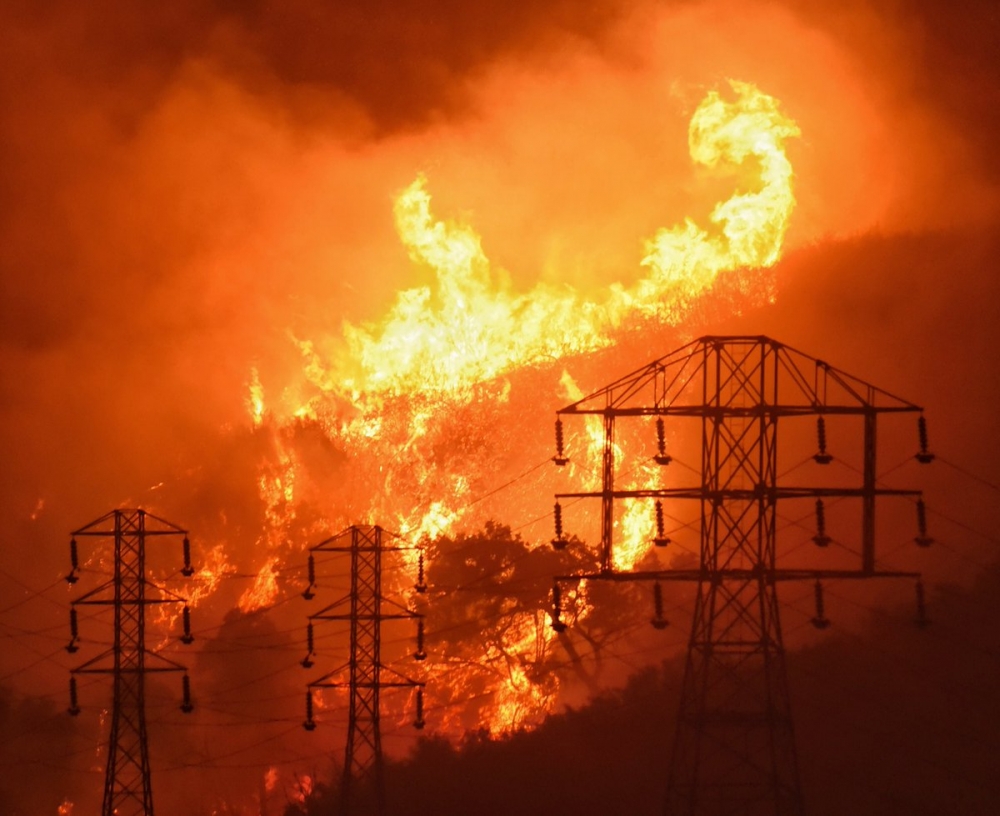
The Sundowner Experiment

The Santa Ynez Mountains rise abruptly from the coast above Santa Barbara and have an east-west orientation. This unusual positioning sometimes results in strong, gusty offshore downslope winds known as Sundowners.
Although conditions for these winds can be predicted in some cases, mechanisms driving their spatial and temporal variability remain largely unknown. Existing scientific understanding of Sundowners largely relies on a few case studies using regional models.
Now, for the first time, a team of scientists from UC Santa Barbara and San Jose State University has evaluated these winds in real time and studied how they vary with elevation. Understanding these aspects can help improve future Sundowner forecasts on the ground — an extremely relevant and valuable tool during wildfires.
The experiment determined that Sundowners are associated with a nocturnal downslope low-level jet with a strong and narrow riverlike flow, a north-south orientation and speeds of about 30 mph at elevations between 328 and 490 feet above sea level.
“This was the first time that we effectively observed the evolution of a nocturnal jet over land in coastal Santa Barbara,” said Leila Carvalho, a professor in the Department of Geography and the principal investigator on a National Science Foundation project called “Understanding Extreme Fire Weather Hazards and Improving Resilience in Coastal Santa Barbara, California.” This latest Sundowner experiment was funded by a Faculty Research Grant. “We have seen the jet in high-resolution model simulations before, but we had no way of confirming these features. Meteorological observations in Santa Barbara are limited to surface stations and do not provide weather information above the ground,” Carvalho added.
Sundowners happen year-round but are more common from March to May or early June, peaking from early evening to early morning, when onshore winds weaken. They are often associated with warm temperatures in the evenings accompanied by low relative humidity. The effect of the winds and temperature vary dramatically with the distance from the mountains. However, all of the major wildfires in Santa Barbara have been dramatically influenced by Sundowners, including the recent Thomas Fire.
During the last weekend in April, when winds gusted to between 40 and 50 mph in the mountains, the researchers launched 13 radiosondes — weather balloons that can reach 75,000 feet into the atmosphere — at three-hour intervals. They were able to capture atmospheric profiles of winds, temperature, pressure and relative humidity.
“Observing the formation and evolution of the low-level jet was extremely important because ultimately these jets can cause mountain waves, which can be strong enough to cause ‘rotors’ or eddies that are dangerous for aviation,” Carvalho explained. “These waves can intensify the gustiness of the winds as well. Therefore, being able to identify and forecast the spatial and temporal evolution of these jets is essential to improve the forecast of Sundowner winds, particularly during wildfires.”
The team’s future research will focus on evaluating these features in models. By simulating these events using a regional model, for the first time, they should be able to compare simulation profiles with actual observations made in the area.
“In the near future, our major goal is to have a comprehensive field campaign in the region,” Carvalho said. “Santa Barbara has faced many disasters lately, and our research aims at improving understanding and advancing our modeling and forecasting capabilities of these events.”



